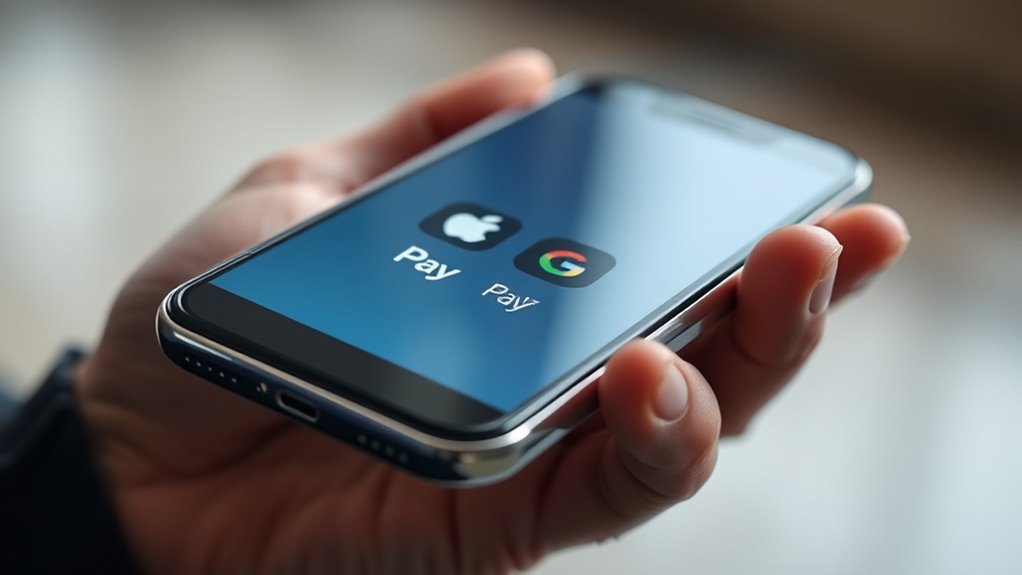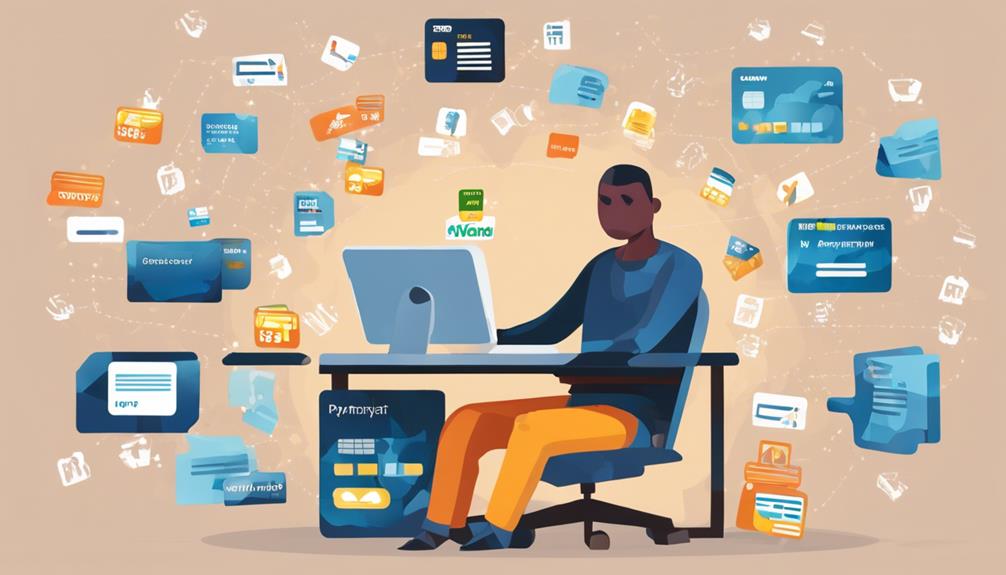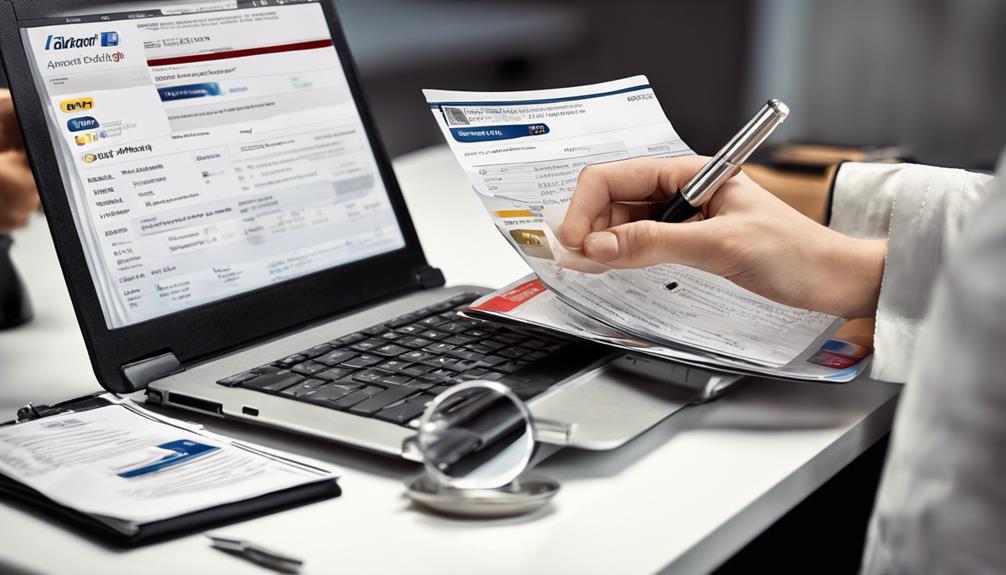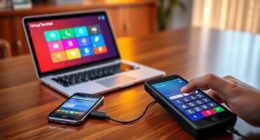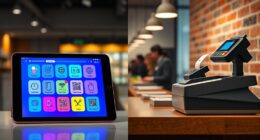When you use Apple Pay or Google Pay, your device securely stores your card info using encryption and biometric authentication, like fingerprint or facial recognition. During a transaction, it doesn’t send your actual card details but instead uses a one-time token, keeping your info safe from thieves. Your phone’s security features separate sensitive data, making sure only you can authorize payments. Keep exploring to discover how all these layers work together for your protection.
Key Takeaways
- Mobile wallets use tokenization to replace actual card data with unique transaction-specific tokens, safeguarding sensitive info.
- Biometric authentication verifies user identity before transactions, ensuring only authorized access.
- Contactless payments rely on device-to-terminal communication, transmitting tokens instead of real card details.
- Device security features like secure enclaves isolate biometric data and cryptographic keys from main system vulnerabilities.
- The combination of tokenization, biometric verification, and hardware security creates a highly secure digital payment environment.
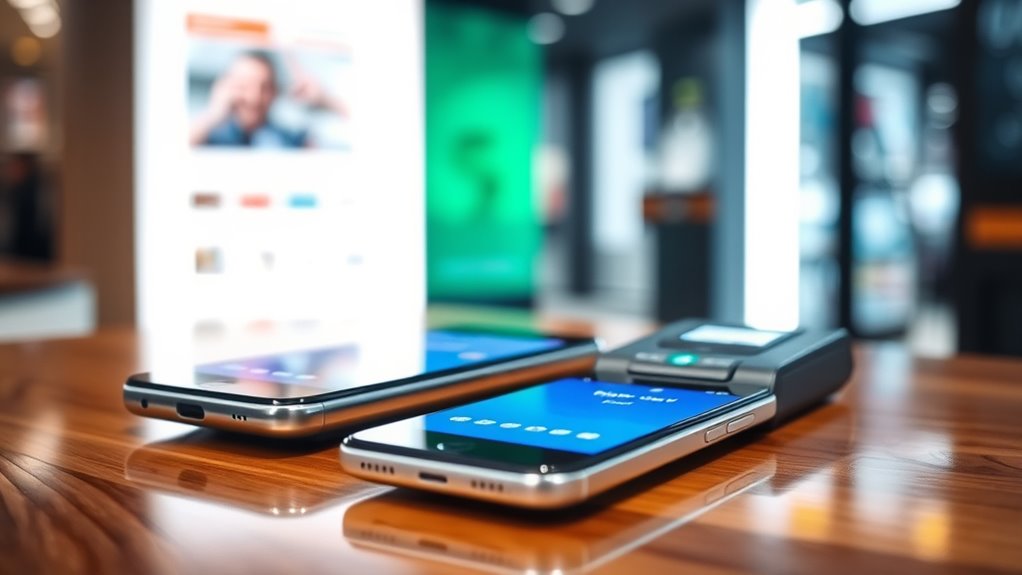
Mobile wallets like Apple Pay and Google Pay have revolutionized the way you make payments by allowing you to store your credit and debit card information securely on your smartphone. When you’re ready to pay, instead of swiping or inserting a card, you simply hold your device near a payment terminal. But behind this seamless experience lies a sophisticated security framework designed to protect your financial data. One key aspect is biometric authentication, which uses your fingerprint, facial recognition, or other biometric data to verify your identity before completing a transaction. This means you don’t have to manually enter a PIN or password each time, reducing the risk of unauthorized use if your phone is lost or stolen.
Biometric authentication adds a layer of security that’s both convenient and reliable. When you attempt a payment, your phone prompts you to authenticate through your biometric method. Only after successful verification does the device generate a unique, one-time payment token that communicates with the merchant’s terminal. This process ensures that your actual card details aren’t shared during the transaction, considerably reducing the risk of card data theft. Instead, tokenization technology is used to replace sensitive card information with a randomly generated token, which is useless if intercepted. This token is what’s transmitted during the payment, ensuring your real account details stay private and secure.
Biometric verification generates secure, one-time tokens that protect your card details during contactless payments.
Tokenization technology acts as a digital shield, making it nearly impossible for cybercriminals to misuse intercepted data. Even if someone manages to intercept the transaction, they only get a useless token, not your actual card number. This system also means that your card information isn’t stored on the merchant’s servers, further minimizing potential vulnerabilities. Additionally, both Apple Pay and Google Pay leverage device-specific security features, like secure enclaves and hardware security modules, to store biometric data and cryptographic keys safely. These embedded security measures ensure that your biometric data and tokens are kept isolated from the rest of your device’s system, adding another layer of protection. Recent advancements in AI security are further enhancing the robustness of these mobile payment systems.
In essence, the combination of biometric authentication and tokenization technology makes mobile wallets a secure way to pay. With biometric verification, only you can authorize transactions, and with tokenization, your card details stay confidential. This sophisticated security setup allows you to enjoy the convenience of contactless payments without sacrificing safety. As these technologies continue to evolve, you can trust that your mobile wallet provides a secure and efficient way to manage your payments in today’s digital world.
Frequently Asked Questions
Can Mobile Wallets Be Hacked Remotely?
Yes, mobile wallets can be hacked remotely, but it’s rare thanks to strong security measures. You’re protected by tokenization, encryption, and multi-factor authentication, which make remote hacking difficult. To enhance fraud prevention, always keep your device’s software up to date, avoid suspicious links or apps, and use strong, unique passwords. Staying vigilant helps prevent unauthorized access and keeps your financial info safe.
How Is Biometric Data Protected in Mobile Payments?
You’re protected because biometric data, like fingerprint security, is stored using biometric encryption directly on your device, not transmitted. When you use your fingerprint, the system verifies it locally, ensuring your biometric info remains private. This encryption keeps your fingerprint data safe from hackers, making sure only you can authorize payments. So, your biometric data stays secure and confidential, providing peace of mind during mobile transactions.
Do Mobile Wallets Work Offline?
Yes, mobile wallets can work offline for certain transactions. When you make offline transactions, your device stores encrypted payment data temporarily, allowing you to complete purchases without an internet connection. Once you’re back online, the wallet synchronizes with the bank or payment network to update your transaction history and security details. This process guarantees quick payments and maintains security, even when network access isn’t available.
Are Mobile Wallets Compatible With All Payment Terminals?
Think of your mobile wallet as a key that fits many doors, but not all. Not all payment terminals are NFC-compatible, which is their way of speaking the same language. Hardware limitations mean some older terminals can’t process mobile wallet transactions. So, while many modern places accept Apple Pay and Google Pay, you might still find some that don’t, making compatibility a game of match and hardware.
How Often Are Security Updates Released for Mobile Wallets?
You should expect security updates for mobile wallets regularly, often whenever new vulnerabilities are discovered or improvements are needed. These updates incorporate password encryption and tokenization techniques, which safeguard your data and transactions. By frequently updating your app, you ensure your wallet benefits from the latest security measures, keeping your financial information safe from potential threats. Staying current with updates is essential for maintaining the highest level of security.
Conclusion
Now that you understand how Apple Pay and Google Pay keep your data safe, you’re holding a digital vault in your pocket. Think of these wallets as guardians, shielding your money like a fortress with invisible walls. As you tap and pay with confidence, remember it’s not just technology — it’s a silent partner, weaving security into every transaction. With mobile wallets, you’re not just spending; you’re riding the wave of a secure financial future.
